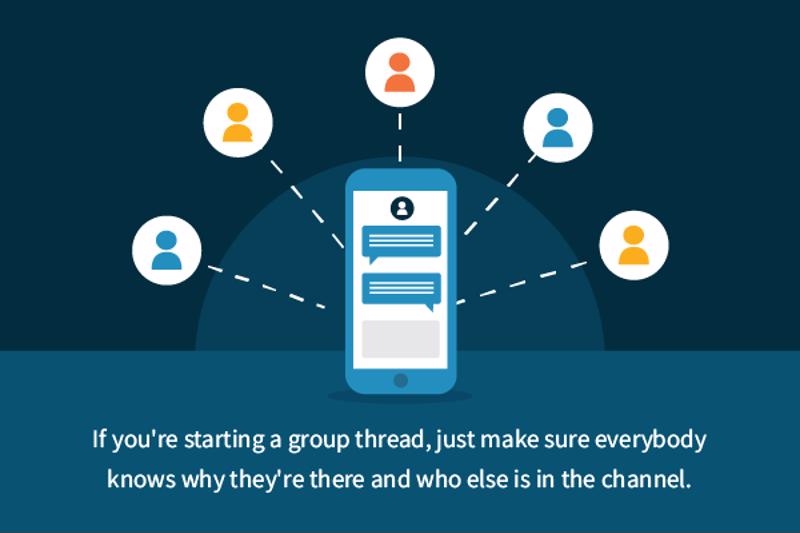The age-old mystery of which came first, the chicken or the egg, is a real philosophical quandary.
When it comes to new communication technologies, however, it seems pretty clear that one precedes the other.
Specifically, we first come up with new ways to keep in touch with each other. Then, by trial and error, we come up with norms for how to use the technology.
When it comes to messaging, that seems particularly true. Especially when you consider that Messenger from Facebook just joined forces with Debrett’s, a British authority on etiquette since the 18th century, to create a guide to the art of digital messaging.
Inspired by their advice, we thought we’d share some best practices for group messaging in the workplace, whether your group thread is housed on our GREXT platform or elsewhere.
1) Keep it professional
We’re not exactly talking about formality here, like referring to each other as Ms., Mrs. or Mr. That will depend on the culture at your workplace.
Instead, we want to emphasize what should go without saying: Anybody can read whatever you’re saying, now or in the future.
This isn’t a happy-hour venting session between you and a trusted confidant. It’s a professional environment, and everything is there in writing (or maybe a couple emojis).
2) Make sure everybody knows who’s in the group, and why they’re there
Want to open an ongoing brainstorming session for a collaborative project? Trying to make it easier to coordinate across departments? Going on a business trip together and working on syncing schedules?
These are all great uses for a group chat!
If you’re starting a group thread, just make sure everybody knows why they’re there and who else is in the channel.

3) Establish appropriate timing
A survey from Carphone Warehouse found that 27% of respondents said you shouldn’t text work colleagues or clients outside normal business hours.
Take the pulse of your group members and set your own norms about what works for you. Then try to keep to it. If you’ve decided on no group messages after 5:00, nobody should check their messages the next morning only to discover 33 new updates to digest.
With that said, try to strike a balance. Strive to respond to a request quickly, but also be flexible giving a day for people to respond to you.
4) Consolidate your messages
If you have a string of thoughts, try to pare them down a bit before you hit send, and focus on what would actually make for a good group message, as compared to an email, phone call or face-to-face chat.
Do what you can to avoid sending a string of messages at once. This leads to a lot of opportunities for derailing the conversation, especially in a group thread.
5) Keep your message the right length
Try not to send a message that’s too long. Aim for maybe a sentence or two.
If you send a message that’s any longer than that, especially if it’s about a complicated topic, you’re likely to be under whelmed by the lack of nuance in the responses you receive. That’s due to the fact that people feel obligated to respond to messages somewhat quickly, but they may not have the time to really think about something deeply, craft an insightful response and then draft and send it from a mobile keyboard.
Instead, they might just reply “K!”
(On that note, as much as you can, make sure to avoid sending super short replies!)
Interested in using a group messaging platform that will help you and your colleagues stay on the same page? Learn more about GREXT, and other services from Swift SMS Gateway, by signing up for a free demo.



